Parents often find drawers full of outgrown baby gear—but is it safe to reuse old silicone items?
Yes, you can reuse old silicone baby products if they are still in good condition, free of cracks, discoloration, or damage. Silicone’s durability makes it safe and sustainable for long-term use.
Reusing baby products makes sense—it saves money, reduces waste, and helps the planet. But when it comes to silicone gear, there are a few things to check before passing items down or repurposing them. Let’s break it all down.
How long does silicone really last?
We know silicone is durable, but how long is it actually usable for baby items?
High-quality silicone can last up to 10 years or more with proper care, making it ideal for reuse across multiple children or purposes.
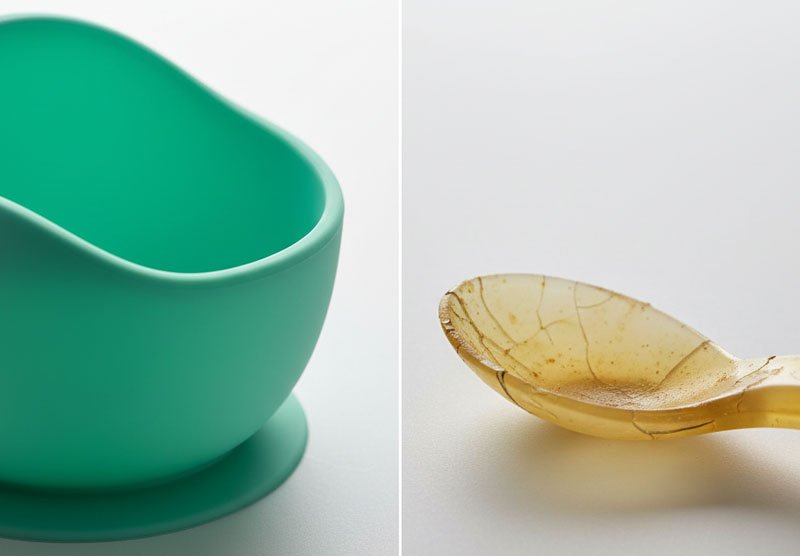
Built to Last
I’ve worked with silicone in product development for years, and I’ve seen it outlast almost every other baby product material. Unlike plastic, which cracks or deforms within months, silicone maintains its flexibility and shape over time—even with daily use.
Food-grade silicone is resistant to:
- High and low temperatures
- Dishwashing cycles
- Boiling and sterilizing
- Bending and chewing
However, time and use can still take a toll. UV light, harsh detergents, or extreme wear can eventually cause fading, weakening, or surface changes.
So, before reusing any item, always check for:
- Deep scratches or cuts
- Loss of elasticity
- Sticky or oily residue
- Torn or stretched parts
If none of these signs appear, the item is likely safe to reuse.
What are the safety checks before reusing?
Just because silicone lasts long doesn’t mean you can ignore wear and tear.
Always inspect old silicone baby products for damage, discoloration, or odor before reuse. Clean thoroughly and test for flexibility.
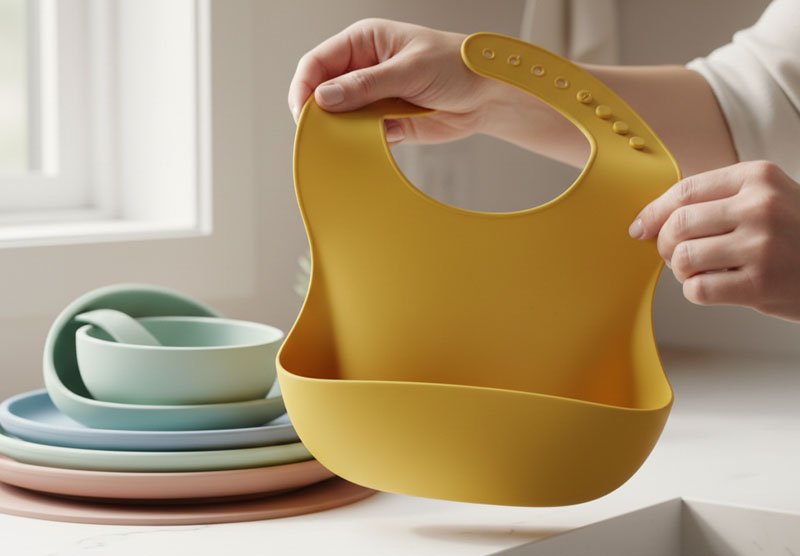
A Simple Reuse Checklist
I recommend doing a quick but thorough inspection before reusing any silicone item for your baby or giving it to someone else. Here’s what to look for:
| Checkpoint | What to Look For |
|---|---|
| Surface Integrity | Cracks, tears, or deep scratches |
| Flexibility | Any stiffness or warping |
| Discoloration | Unusual yellowing or dark spots |
| Odor | Lingering smells, especially sour |
| Stickiness | Tacky or oily feel after cleaning |
If anything feels off, it’s safer to retire the product. But if it passes inspection, give it a deep clean—preferably boiling or dishwasher-safe cleaning—to restore it for safe reuse.
Can you pass down silicone gear between children?
Parents often save baby items for future siblings. But is that smart—or safe?
Yes, you can safely pass down clean, intact silicone items like bibs, spoons, and plates as long as they remain in good condition.
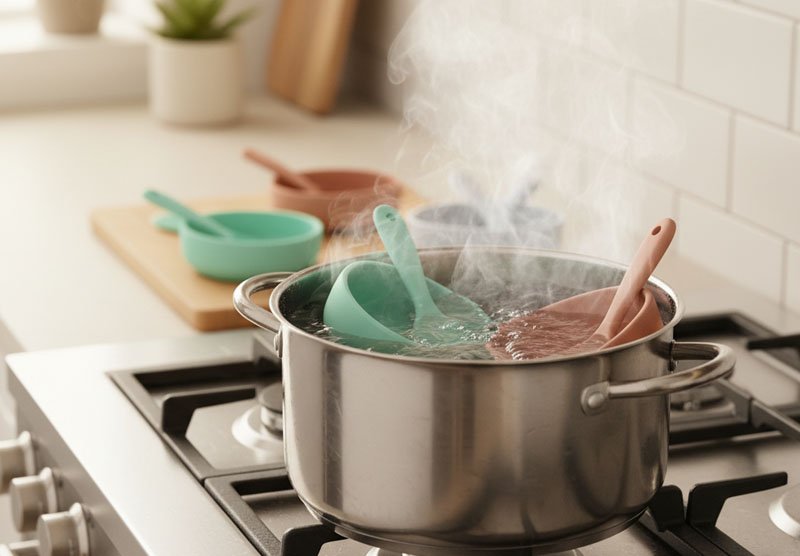
Save It, Sanitize It, Share It
I’ve heard from many parents who store silicone baby products after their first child, planning to use them again. The good news? Most silicone gear holds up well in storage.
Before passing down items:
- Check for mold or moisture from storage
- Wash with hot soapy water or sterilize
- Inspect for wear, especially on spoons or teething items
Some items are better candidates for reuse than others:
| Silicone Item | Reusable? | Notes |
|---|---|---|
| Bibs | Yes | Clean and inspect snaps or buttons |
| Spoons & Utensils | Yes | Avoid if chewed or damaged |
| Teething Toys | Maybe | Reuse only if no deep chew marks |
| Bowls & Plates | Yes | Dishwasher and sterilizer safe |
| Pacifiers | No | Best to replace for hygiene reasons |
Items like pacifiers or heavily chewed teethers are best replaced. But for most feeding tools, reuse is safe and practical.
Can you repurpose old silicone baby products?
Your child may be past the baby stage, but what about all those leftover feeding sets?
Old silicone products can be repurposed creatively—use them in the kitchen, for crafts, or even as plant holders.
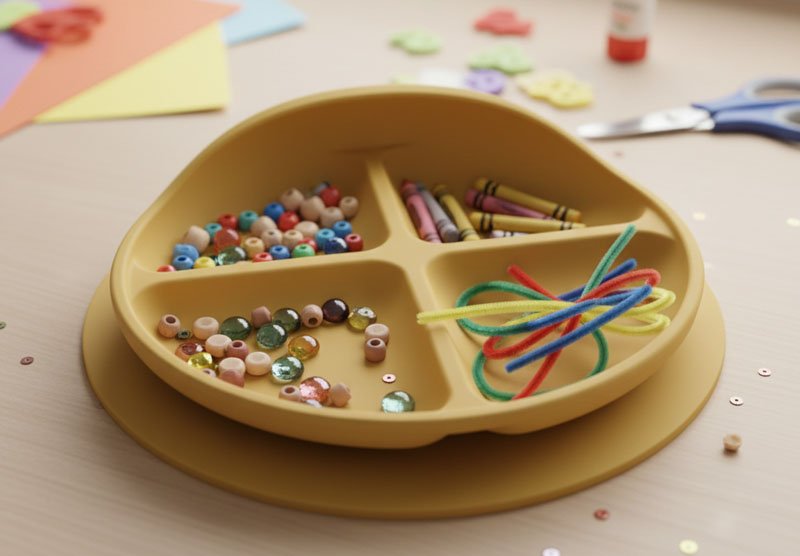
Give Silicone a Second Life
One thing I love about silicone is its adaptability. Even when an item isn’t useful for babies anymore, it often has value elsewhere.
Here are some clever repurposing ideas:
| Old Baby Product | Repurposed Use |
|---|---|
| Silicone Bibs | Mess-free paint apron for crafts |
| Suction Plates | Toddler snack tray or art supply holder |
| Spoons | Toddler-safe kitchen helper tool |
| Food Containers | Small storage for beads, clips, snacks |
| Teething Rings | Silicone keychain or sensory toy |
Just be sure to clean items thoroughly before repurposing them. And always label or separate from current baby gear to avoid confusion.
Are there any recycling options for worn silicone?
Eventually, even the best silicone product reaches the end of its life. Then what?
Silicone can be recycled through specialized recycling programs or manufacturers that accept silicone waste. Regular curbside recycling usually doesn’t accept it.
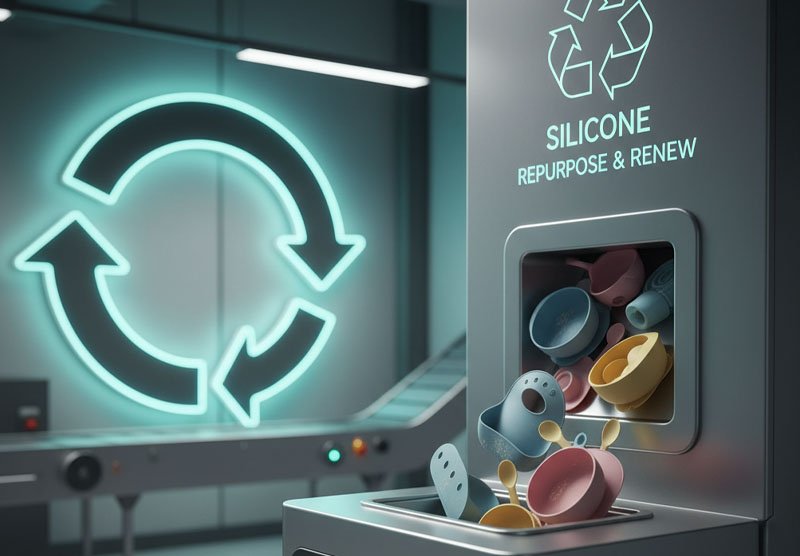
Recycling vs. Disposing
Silicone is technically recyclable, but most municipal systems don’t process it. That’s why it’s important to look for companies or programs that offer take-back services.
Here are your options:
- Check with manufacturers: Some offer take-back programs (especially eco-conscious brands).
- Contact local eco centers: Ask if they accept silicone for industrial recycling.
- Reuse creatively: Keep using it in non-baby settings as long as it remains safe.
At RuiYang, we’re exploring closed-loop recycling in our production—so offcuts and old molds don’t go to waste. If more brands follow this path, silicone will become even more sustainable in the long run.
What are the long-term benefits of reusing silicone?
Every reused product keeps one more item out of the landfill.
Reusing silicone baby products reduces waste, saves money, and supports a more sustainable parenting lifestyle.
Reduce Waste, Raise Smart
I always tell clients: durability isn’t just a feature—it’s a sustainability promise. When we reuse rather than replace, we make better use of resources and reduce our environmental footprint.
Benefits include:
- Lower household waste
- Reduced spending on replacements
- Less environmental impact compared to plastic
- Fewer low-quality purchases
And if more families reuse and repurpose, demand for disposable or short-lived baby products will decrease—helping shift the market toward smarter, longer-lasting solutions.
Conclusion
Yes, you can safely reuse silicone baby products—as long as they’re in good condition. Clean them well, check for damage, and enjoy the long-lasting value they offer.